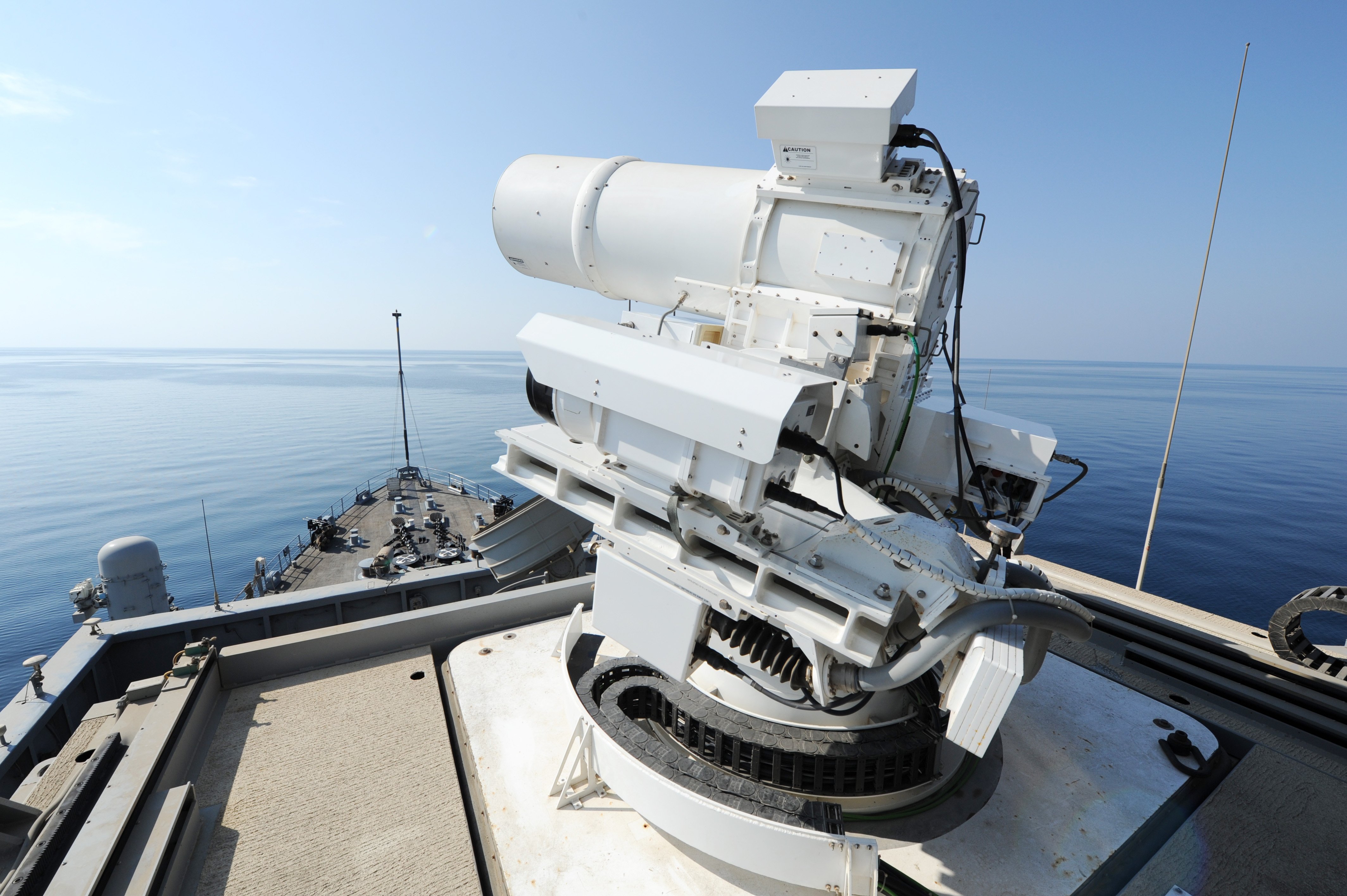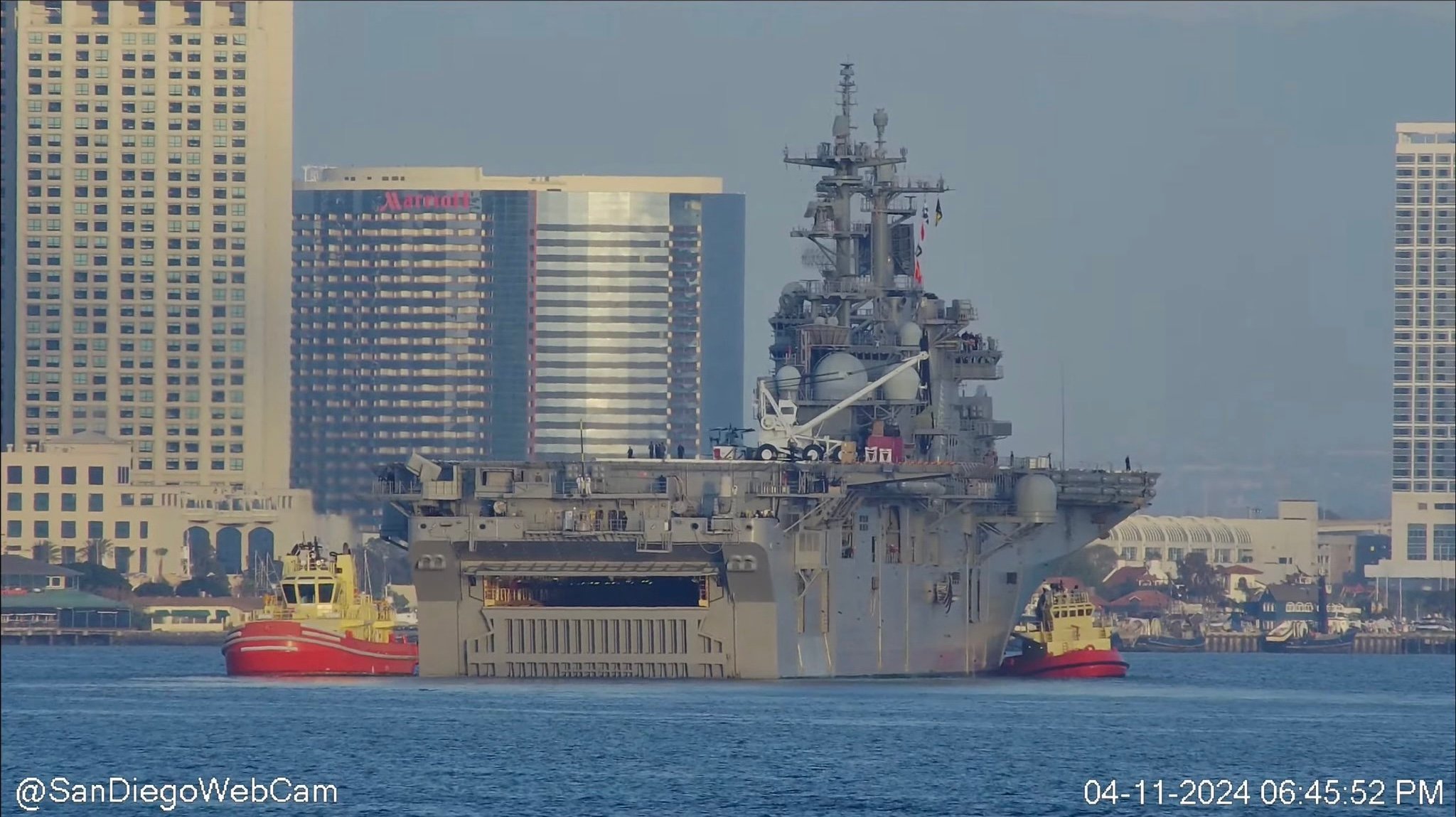
The Navy is “fully committed” to developing and fielding advanced directed energy weapons to deal with emerging threats and to reduce the cost per shot, the Navy’s number two officer said today.
“We need to push technology forward” and do it faster than historic advances in fielding new weapons capabilities, Vice Chief of Naval Operations Adm. William Moran said at the Directed Energy Summit, cohosted by Booz Allen Hamilton and the Center for Strategic and Budgetary Assessment.
Moran noted that the Navy had “already authorized a defensive weapon” and deployed it, citing the laser system mounted on the USS Ponce (AFSB(I)-15), which is on station in the U.S. Central Command theater.
The 30 kilowatt solid-state XN-1 laser on Ponce has been authorized for use as a defensive weapon, he said. The Navy “will field a 100-kilowatt system in the near future,” he added.
The Navy also is working to field high-power microwave systems, which can create unbearable heat on a person without lasting injury, to provide “enhance self-protection” with non-lethal system, Moran said. And, he warned, “these technologies are being developed and fielded by a lot of countries. If we don’t go forward, we will fall behind.”
Listing some of the advantages of directed energy weapons, Moran said they could provide “deep magazines” on warships so they do not have to use expensive and limited numbers of conventional weapons “on targets that you can handle with directed energy.”
Using directed energy weapons, which only require powerful burst of electrical power, also can reverse the negative cost-per-kill ratio of using multi-million-dollar defensive missiles against relatively cheap anti-ship cruise missiles, he indicated.
They would mean “spending pennies on the dollar” for defense, he said.
“Low-cost directed energy weapons have to be part of our future” and are being designed for use in the fleet today, Moran said.
“If we have to continue to rely on projectiles, we will run out of the ability to defend ourselves in the future,” he said.
“We are fully committed to taking this into the future.”
The Navy’s directed energy weapons program received an endorsement from an earlier speaker, when Lt. Gen. Bradley Heithold, commander of the Air Force Special Operations Command, in describing his push to put an offensive laser on his AC-130 gunships noted that “we already have a laser on the battlefield. It just happens to be on a ship.”
Heithold said his command has a contract with the Navy Surface Warfare Center at Dahlgren, Va., which led the development of the XN-1 laser, to help the Air Force program.
“We’re going to lean on them,” he said.
Current laser technology, “like anything else, is going to be a little too big, too expensive” for his use with Air Force special operations, he said, and called on industry to help change that.
“This is an evolution. It’s doable,” Heithold said.
“The bottom line is, this is a game changer.”




